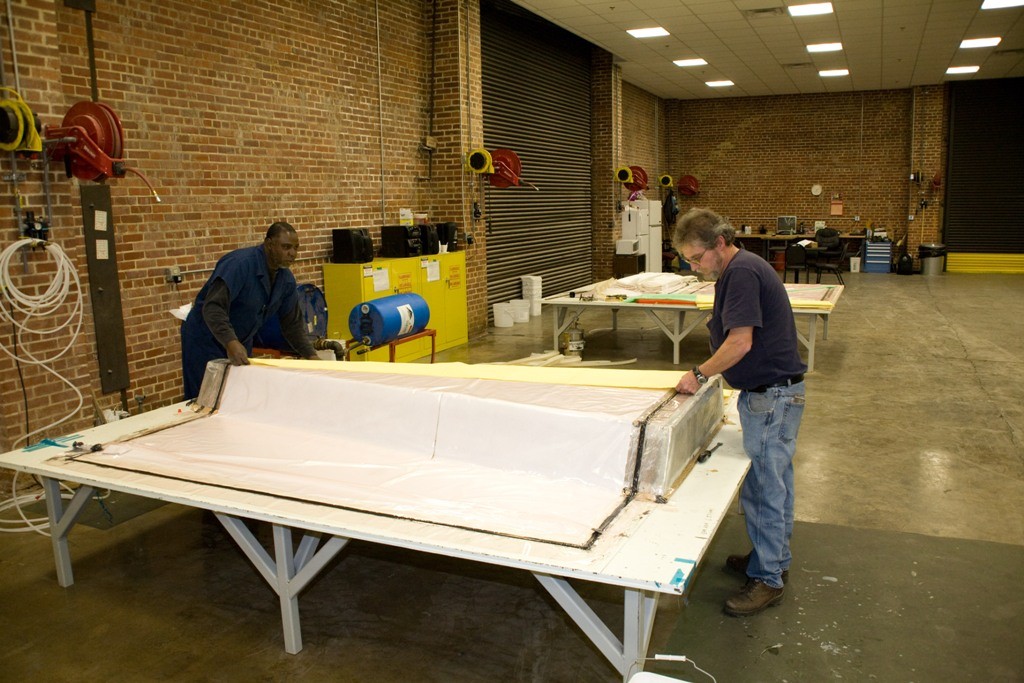ANNISTON ARMY DEPOT, Ala - The Assault Breacher Vehicle uses a plow attached to the front of the vehicle as well as the Linear Demolition Charge System to clear a path through minefields for troops to travel.
Anniston Army Depot, the principal source for the ABV, makes the LDCS covers in a unique process using fabric and resin. Two fabric workers from the upholstery branch are making this happen.
According to Glenda Loggins, parts manager for fabrication, the covers, located on the ABV turret, move with the launch rail to fire charges needed to clear a 100 meter-long path through a mine field.
The nearly four-foot-long covers appear to be metal once they are complete and installed on the ABV, yet they are made by workers in the depot's upholstery shop from multiple layers of Kevlar, a high-strength fabric, and fiberglass, which are hardened with resin.
The two fabrics, as well as the way each layer overlaps the others, make the panels lightweight enough to be easily moved by the ABV's mechanical lifts, yet strong enough to provide protection for the explosive charges, according to Bobby Coffee, a fabric worker assigned to create the ABV covers.
The term lightweight on an ABV is a relative term. Each panel - before hinges, metal trim and other components are added - weighs 1,000 pounds, but that is insubstantial compared to a vehicle that weighs more than 60 tons.
Creating these panels and ensuring they have the strength to stand up under fire on the battlefield requires very specific conditions.
"The building has to be environmentally controlled to keep humidity out of the panel when workers are infusing it with resin," said Jacky Austin, supervisor for the upholstery branch.
According to Austin, the building must maintain a temperature between 70 and 72 degrees Fahrenheit at all times. In addition, a dryer set at 350 degrees is used to remove excess moisture from the sheets of Kevlar.
Each layer is carefully laid across a mold and held in place using vacuum pressure, throughout the process of building each panel and infusing it with resin. The vacuum also keeps the panel very thin.
"The part has to be 1 1/8 inches after it has been vacuumed down," said Coffee.
Because of the labor and time-intensive process it takes to create each panel, workers create two per week, which are then sent to the machining shop. There, access holes are cut and the panels are trimmed to their final size using high-pressure water and sand. Each piece is then painted to match the vehicle and sent to another shop where hinges, lifts and trim are added before the panels are attached to the ABV turret.
The turret of the ABV is created on the depot from new materials, but the chassis of the ABV is a reconditioned M1 Abrams tank chassis. The depot has been producing ABVs since 2008.


Social Sharing